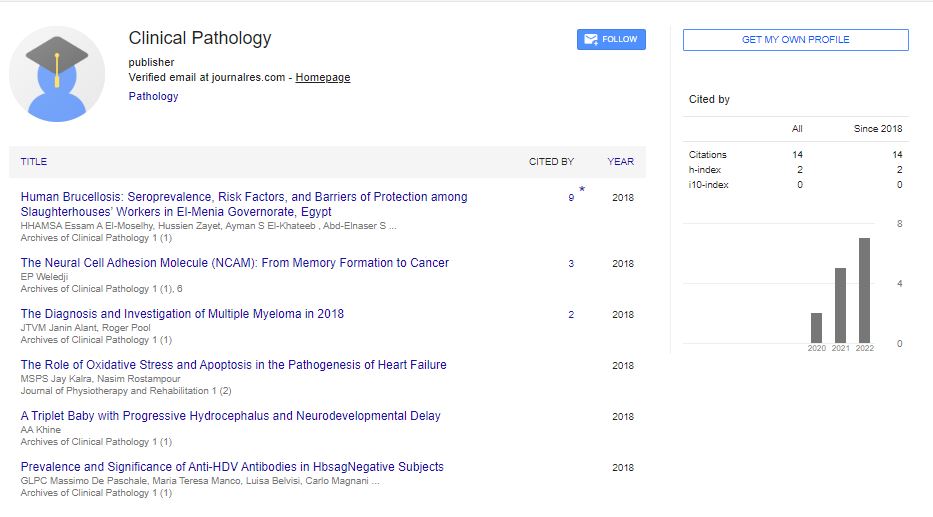Perspective, Arch Clin Pathol Vol: 4 Issue: 4
Anesthesia and Neurodevelopment in Children
David Sherif*
Department of Child Psychology, University of Mayo, Rochester, Minnesota
Keywords: Neurodevelopment
Exposure of young animals to most clinically utilized anesthetics in adequate doses changes brain structure and affects noses and behavior in later life. The question of whether or not these findings are often translated to youngsters has spurred various studies, reviews of those studies, and commentaries. In the current issue, of the leading investigators during this field give an excellent criticism of the literature concerning youngsters, as well as recent studies that have contributed considerably to our understanding. As justly noted by the review authors, the considerations concerning whether or not anesthetics may be “neurotoxic” in youngsters, and so the Food and Drug Administration’s warning concerning the potential toxin effects of most anesthetics, were driven primarily by observations in animals, not by associate “obvious clinical drawback.” Considerations concerning adverse neurodevelopmental outcomes once major infant and cardiac surgery are long, but any such effects were usually attributed to the underlying conditions necessitating surgery and alternative perioperative factors, instead of anesthesia. The potential for relatively short surgical changes in behavior is well recognized, however few suspected that anesthesia itself could have long run neurodevelopmental effects. This lack of suspicion has been accustomed argue against any vital effects of anesthesia exposure, as sure as shooting if this was a real drawback, then we might have noticed it by currently. Why have we had a tendency to not, apart from the chance that there's no problem? First, there are multiple examples during which considerations about the toxicity of a chemical arose 1st from laboratory observations, and were then confirmed in youngsters, in the absence of an evident clinical drawback.5One notably tasty example is antenatal exposure to licorice candy. Glycyrrhizin in licorice inhibits a placental enzyme that maintains comparatively low fetal levels of glucocorticoids. In animal models, the ensuing fetal internal secretion overexposure produces, among alternative things, deficits in learning and memory, as well as augmented anxiety behaviors. The potential clinical significance of this observation, first made in animals, was supported in longitudinal cohort study finding that top licorice consumption in physiological state associated with lower intelligence associated an increased frequency of attention deficit disorder disorder.6Another example is polycyclic aromatic hydrocarbons, a class of environmental contaminants generated by incomplete combustion. Another excuse that the matter might not be “obvious “is as a result of injury could need time to be created manifest. Higher psychological feature skills and sophisticated behaviors could need considerable time to develop (as any music teacher will tell you), and also the consequences of injury early in development again, initial findings in animal studies were followed by a longitudinal cohort study that measured in utero exposure to those compounds and confirmed a robust association between exposure and multiple neurodevelopmental problems. Imaging studies known specific alterations in brain structures that mediate these effects, providing sturdy proof of a causative link. These and alternative examples have many implications, including: (1) causative inferences are often created from animal and data-based human studies within the absence of randomized clinical trials; (2) the facility (and maybe, necessity) of longitudinal cohort studies; and (3) whether or not the initial observations are created within the laboratory or in clinical observe isn't relevant to the validity and significance of the finding.
 Spanish
Spanish  Chinese
Chinese  Russian
Russian  German
German  French
French  Japanese
Japanese  Portuguese
Portuguese  Hindi
Hindi 